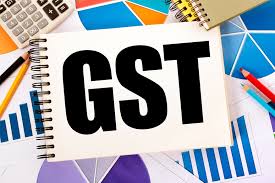GST revenue buoyancy a worry, GoM panels to reassess slabs
As buoyancy in Goods and Services Tax (GST) revenues poses a concern, the ministerial panels to be constituted under the GST Council is likely to also carry out a review the key tax slabs under the indirect tax regime. This will be in addition to rate rationalisation, correction of inverted duty structure, relook at exemptions, e-way bill systems, e-invoices, FASTag data and other technological measures, which would be reviewed by the ministerial panels as part of its broader revenue augmentation mandate.
The lower-than-expected revenue buoyancy and the slipping of the revenue neutral rate under GST is being seen as one of the major concerns for sustenance of the revenue trend going ahead, especially after the legally mandated compensation to states for revenue shortfall from the GST implementation comes to an end in June 2022.
“Revenue (under GST) is a concern. Next two-three months will be focused on steps such as rate rationalisation. The GoM will relook at tax slabs and look at the possibility of merger of some slabs. They may look into it now and recommend changes, which may get implemented later, depending on other factors such as market and economic conditions at that point of time,” a senior government official told The Indian Express.
Any such recommendation of tweaks in rates or tax slabs by the GoM would then require final approval of the GST Council. The GST has five key tax slabs: zero, 5 per cent, 12 per cent, 18 per cent and 28 per cent. A compensation cess, ranging between 1 per cent to 290 per cent, is levied on demerit and luxury goods over and above the topmost rate of 28 per cent. A merger of 5 per cent and 12 per cent slabs or 12 per cent and 18 per cent slabs has been deliberated upon earlier as well but has not been taken up formally for a decision.
The GST Council in its 45th meeting held in Lucknow had deliberated upon the revenue situation and the revenue neutral rate having fallen to 11.6 per cent from 15.5 per cent. The Council had then decided to form two GoMs to look at inverted duty structure and compliance measures through e-way bills, composition schemes. The constitution of the two GoMs is expected to be announced soon.
The Revenue Neutral Rate of 15.5 per cent coming down to 11.6 per cent is because of course, the Council in its wisdom probably over the years had reduced the rate of many many items and not just the reduction, but the resultant refund due to the inversion have resulted, net net, in the collection coming down from the revenue neutral levels. As a result we feel that the overall collection has come down. We also feel why it has come down. But if we all put together we can all see that we are far below the revenue neutral rate,” Union Finance Minister Nirmala Sitharaman had said after the Council meeting.
The mandate announced for the GoMs after the Council meeting last week did not include a review of tax slabs. Sitharaman had said the terms of reference would relate to correction of inversion and rate rationalisation
Download our App to get knowledge updates: https://play.google.com/store/apps/details?id=com.app.gstmitra
.



Comments
Post a Comment